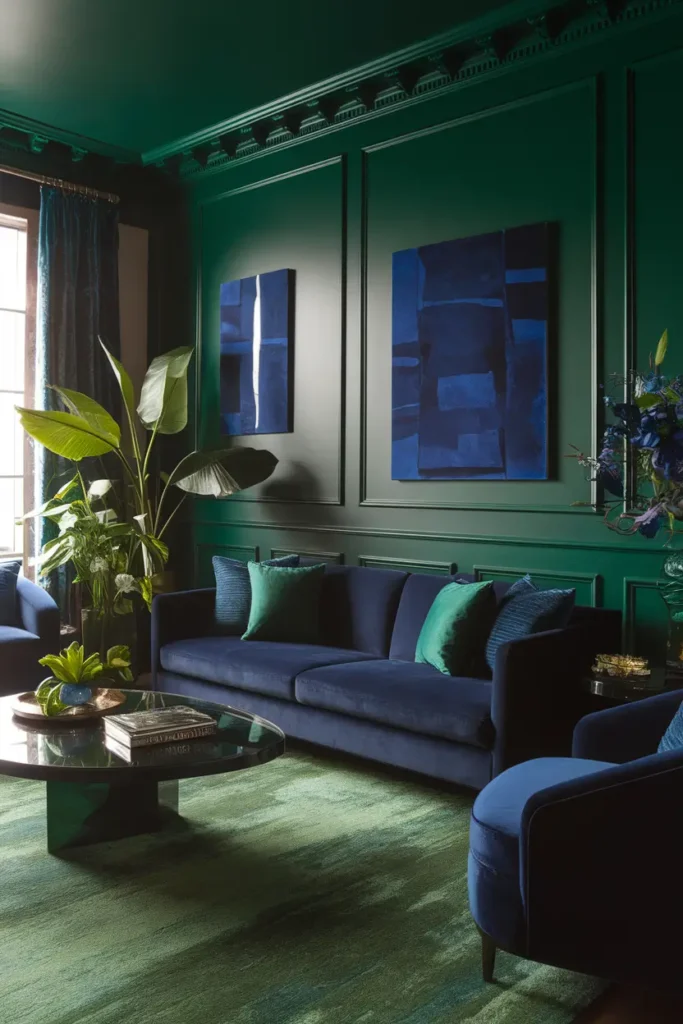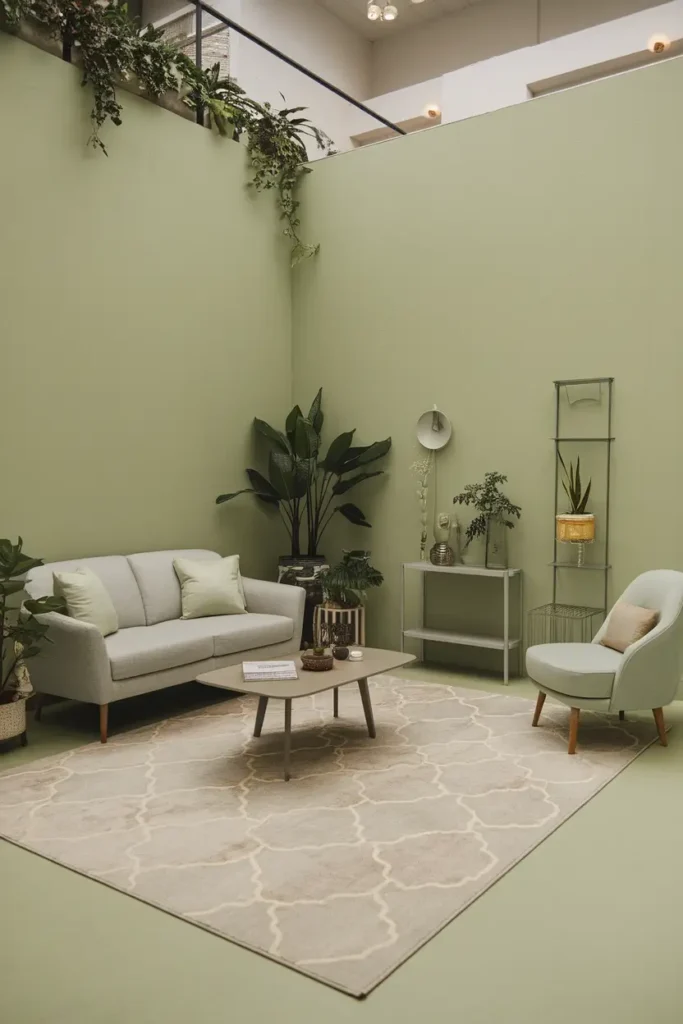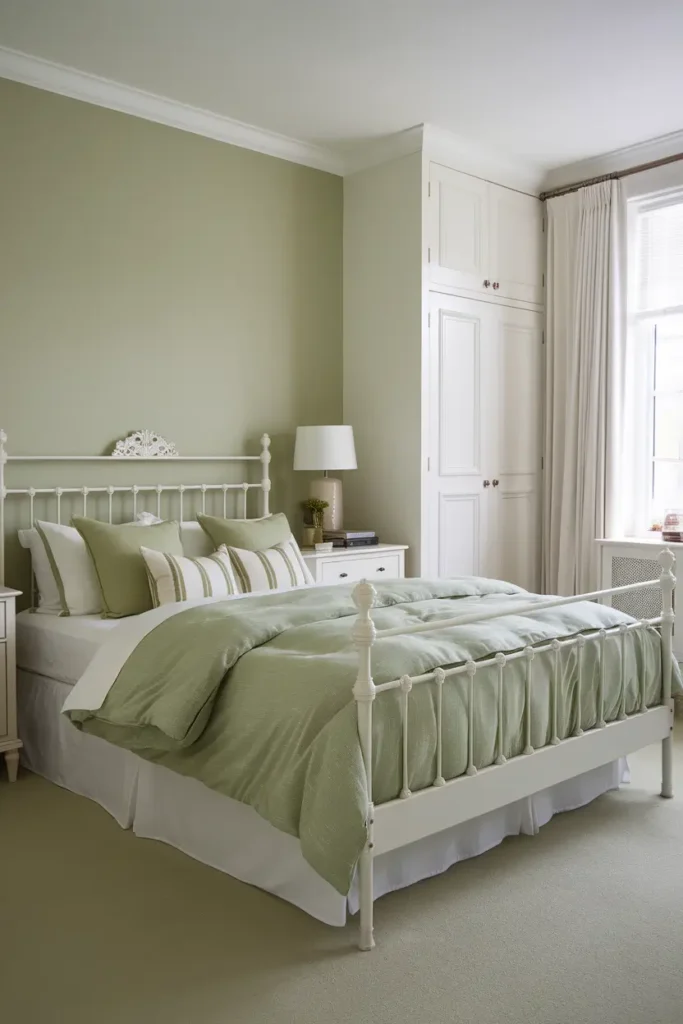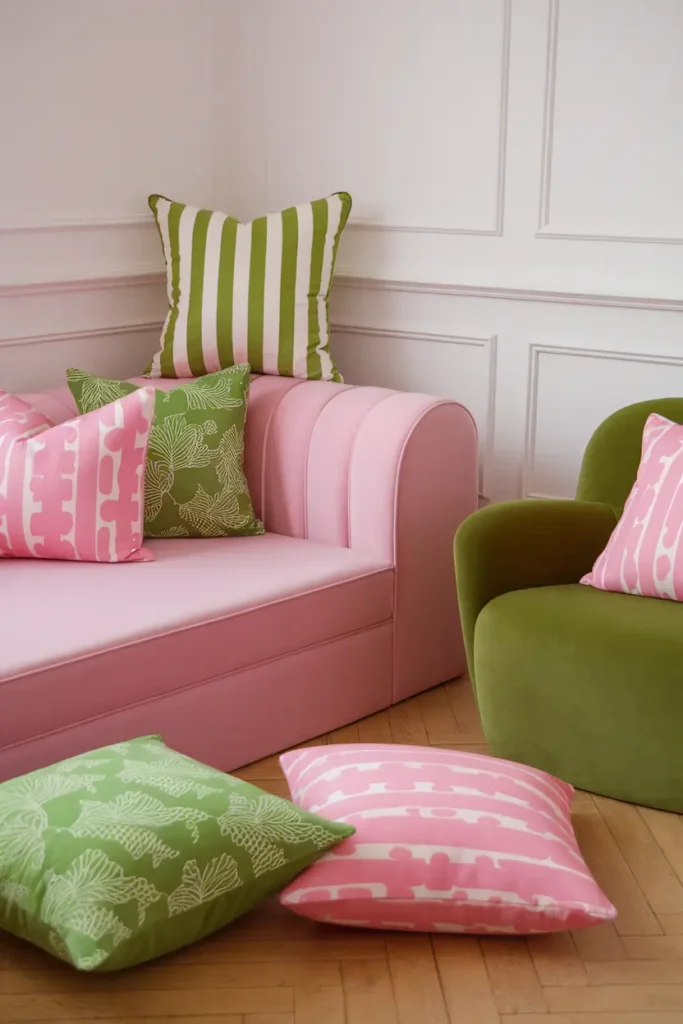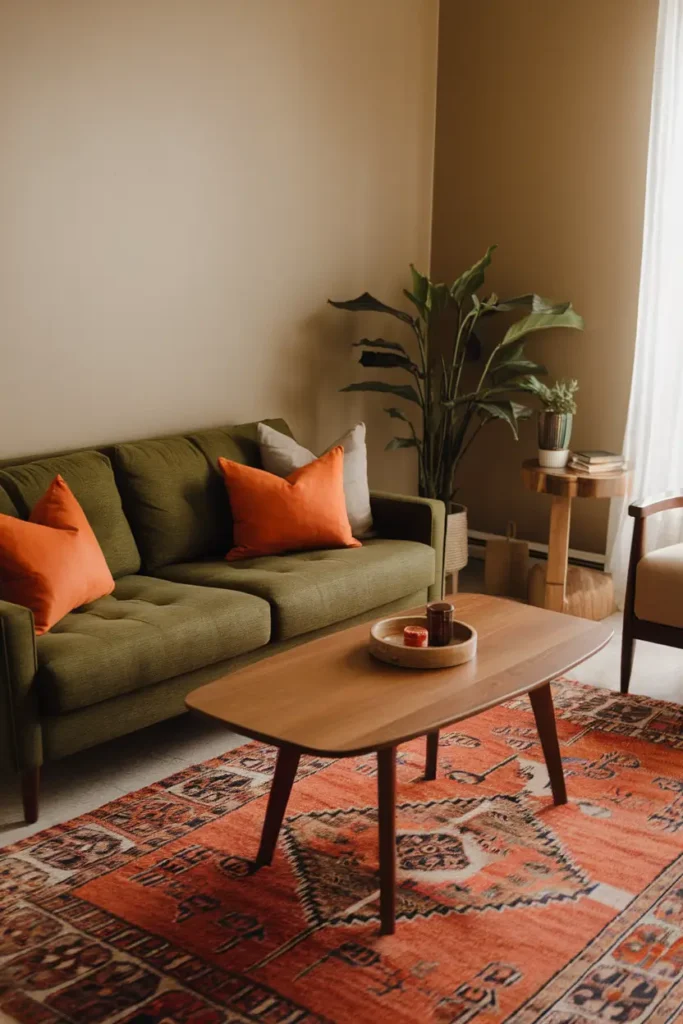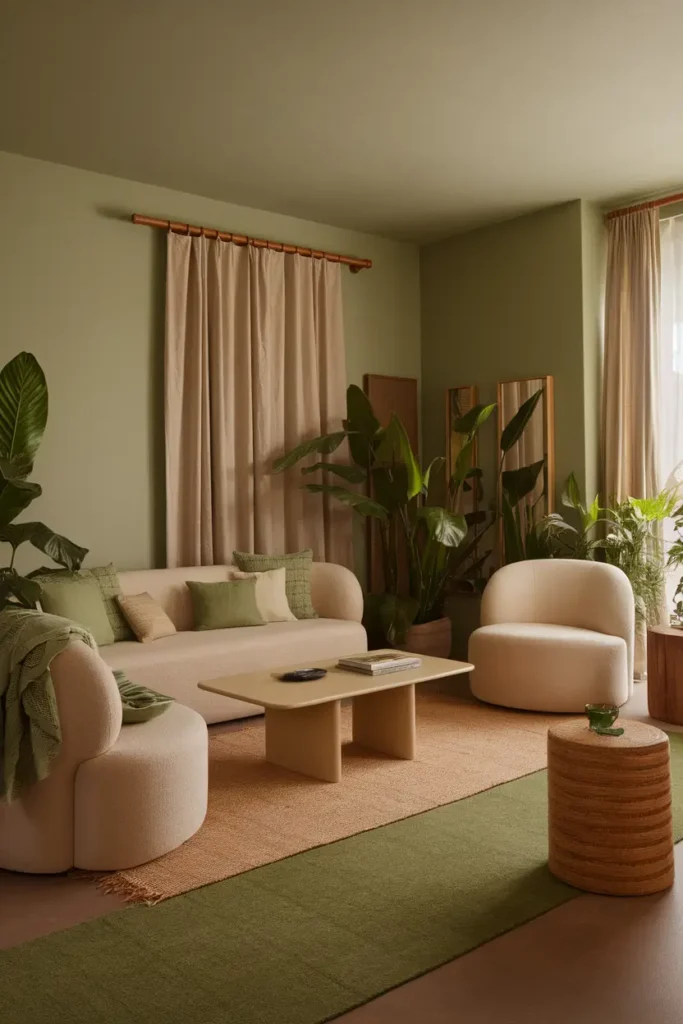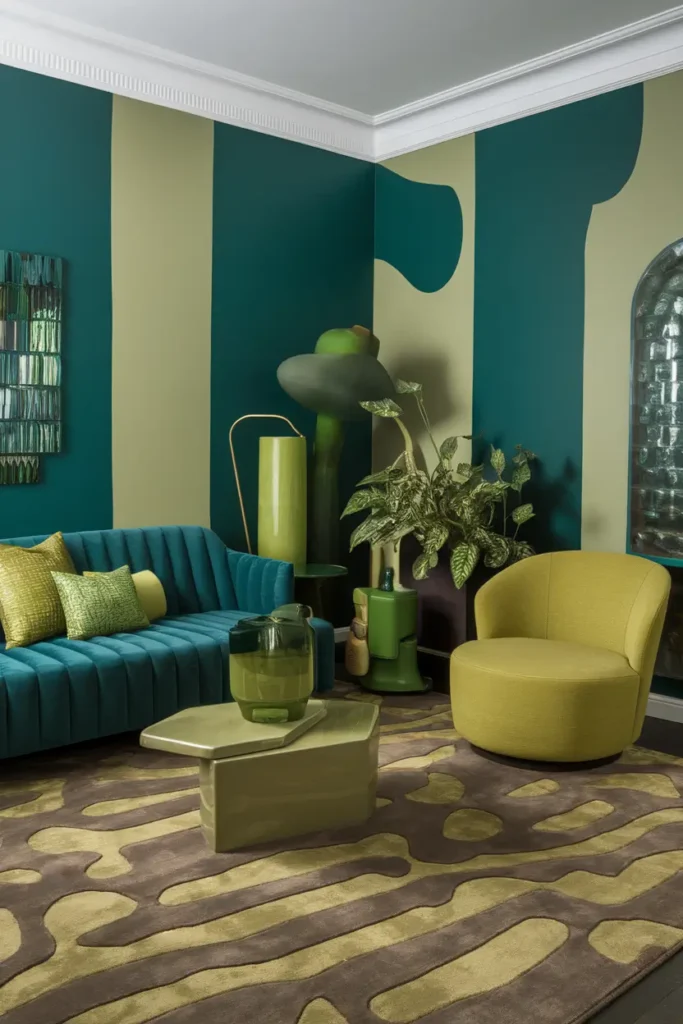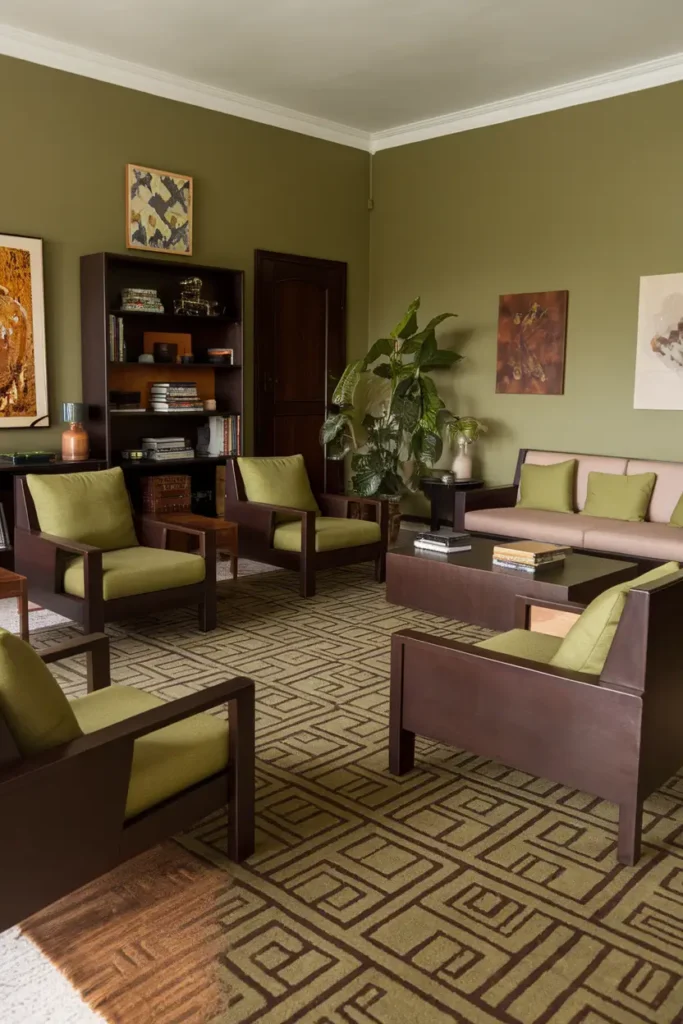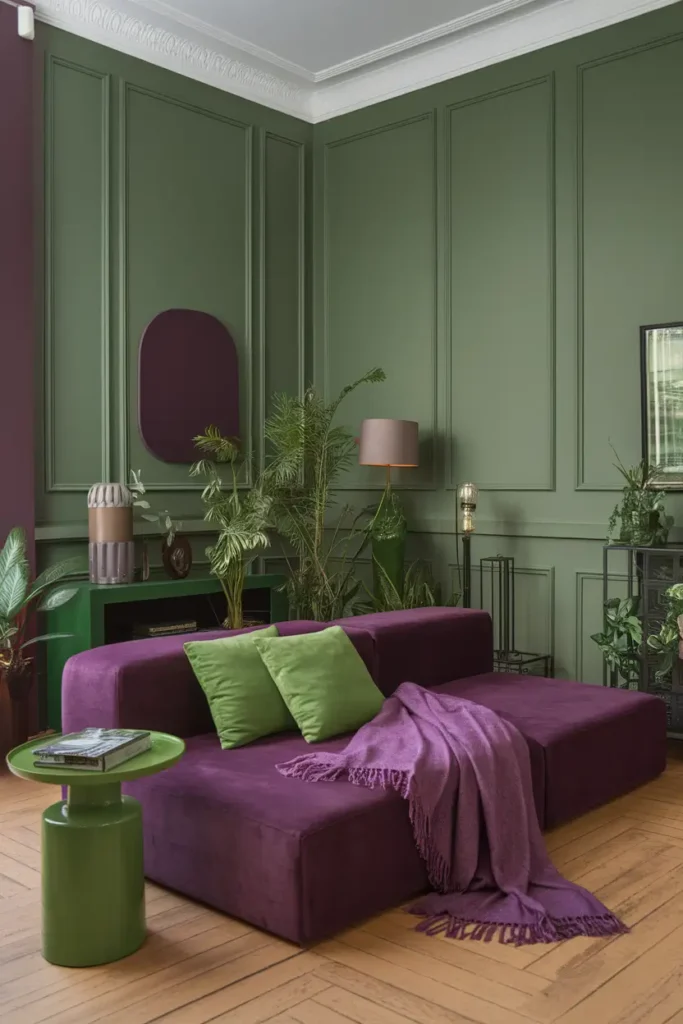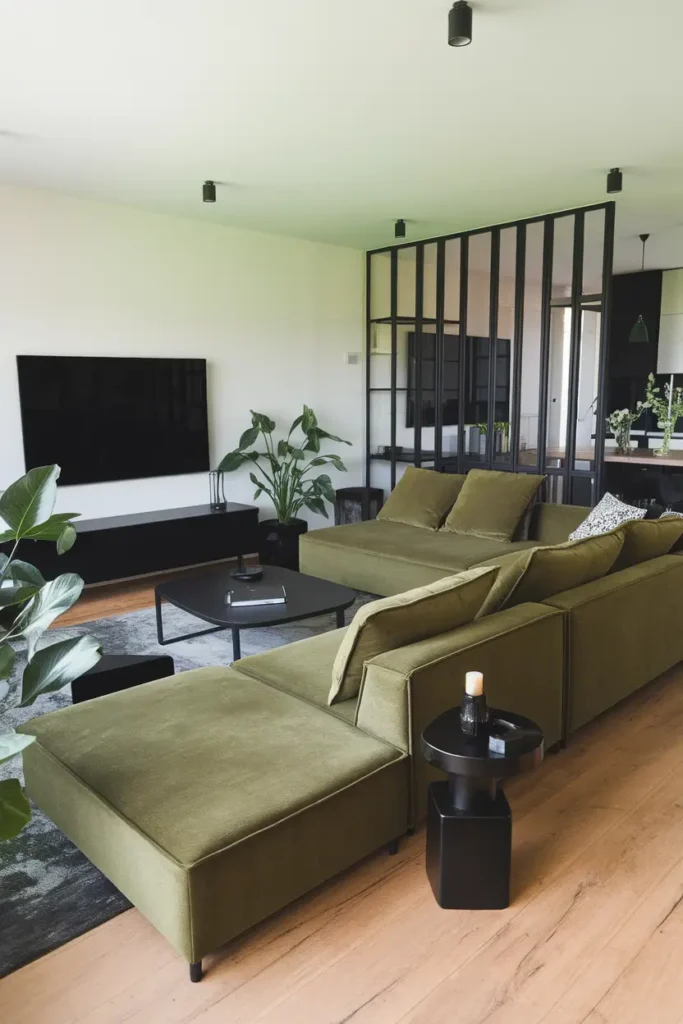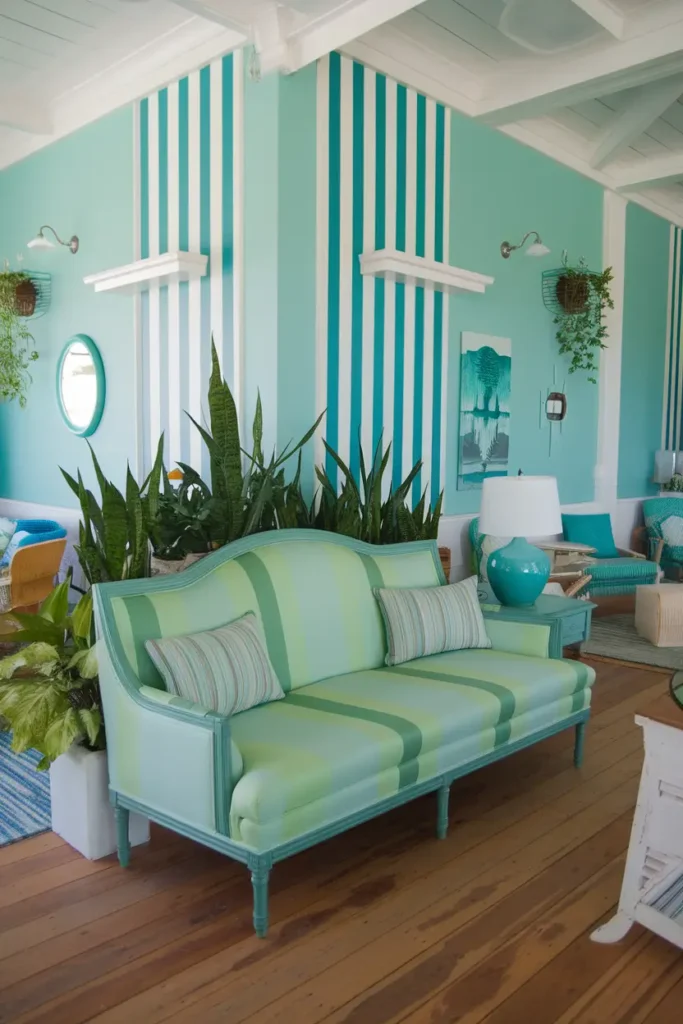16 Colors That Go With Green – Best Color Combinations & Design Ideas
Green is known as a versatile and calming color, often associated with nature, growth, and renewal. Its adaptability makes it a favorite choice in various settings, from interior design to branding and graphic projects.
Whether you’re designing a cozy, welcoming living space, planning a striking outfit, or crafting visuals for your next branding campaign, green can shine as the main feature or serve as a subtle yet impactful supporting hue.
But what colors truly bring out the best in green? Choosing the right combinations can elevate your designs, creating harmonious or bold contrasts depending on your goals.
This article dives into 16 stunning colors that pair beautifully with green and provides practical tips to incorporate them effectively into your projects, ensuring your designs leave a lasting impression.
16 Colors That Complement Green
1. Blue
Blue, particularly in sapphire or navy tones, creates a striking contrast with green while adding depth and sophistication. This color combination is inspired by natural landscapes, evoking imagery of lush forests meeting a clear blue sky.
Use blue as an accent color through upholstery, throw pillows, or artwork to balance the richness of emerald green walls.
For a more dramatic effect, pair varying shades of green and blue together to create a layered, luxurious aesthetic.
2. Yellow
As neighboring colors on the color wheel, yellow and green naturally complement one another, infusing spaces with cheerful energy and warmth.
Mustard yellows pair beautifully with olive greens, creating a cozy and inviting ambiance perfect for living rooms or studies.
Meanwhile, zesty lemon yellow can uplift mint green, giving a fresh and vibrant atmosphere suitable for kitchens, dining areas, or even children’s rooms.
This duo works particularly well when you want to bring sunlight and vitality into a space.
3. Grey
The neutrality of grey makes it a perfect partner for green, helping create a serene yet contemporary vibe.
Light grey tones combined with pistachio green walls can make rooms feel larger and brighter, making this pairing ideal for small spaces or minimalist interiors.
For a more dramatic look, pair charcoal grey with darker greens like forest or hunter green to achieve a rich, modern aesthetic.
Incorporate grey through furniture, rugs, or metallic accents for added texture.
4. White
Crisp white enhances green’s natural freshness and vitality, making spaces feel clean, airy, and vibrant.
This pairing works particularly well in spaces like sage green bedrooms or mint green kitchens, where white can act as a neutral anchor.
Opt for white cabinets, countertops, or textiles to keep the overall look bright and open.
When paired with light green tones, white helps create an effortlessly elegant and timeless interior design that never goes out of style.
5. Pink
Pink and green make a playful yet sophisticated color duo, perfect for those who want to add charm and personality to their spaces.
Light blush pink paired with deep emerald green offers a chic and stylish palette, ideal for bedrooms, living rooms, or even statement furniture pieces.
For a bolder choice, use brighter pink shades like fuchsia against softer greens like sage or pistachio.
This combination evokes a modern yet inviting feel, making it a favorite for fashion-forward interiors.
6. Red
For bold and energetic designs, pair green with its complementary color, red. To avoid creating a holiday-themed aesthetic, opt for muted or deep red shades like burgundy, maroon, or rust.
These tones pair beautifully with olive or forest greens, creating a warm and cozy atmosphere perfect for dining rooms or study spaces.
Incorporate red tones through rugs, accent chairs, or decorative cushions to add vibrancy and energy while maintaining balance.
7. Orange
Green and orange create a vibrant and dynamic pairing that radiates warmth and positivity. Burnt orange, when combined with shades like forest or sage green, offers a grounded and balanced look ideal for Boho or mid-century interiors.
For a more eclectic vibe, try brighter oranges like tangerine or coral paired with lime green accents.
This pairing works particularly well in living areas, creative spaces, or even outdoor patios, where energy and warmth are welcome.
8. Beige
Beige tones complement green’s earthy and organic appeal, creating a sense of coziness and calm. This pairing is especially effective in rustic, Scandinavian, or Boho-inspired interiors.
Sage green walls combined with beige furniture, textiles, and natural elements like wood or rattan add depth and warmth to any room.
For additional interest, layer different shades of beige and green together, creating a soft, tonal look that feels effortlessly stylish and inviting.
9. Teal
Teal, a stunning green-blue hybrid, forms a harmonious blend when paired with other greens like lime, emerald, or moss.
This pairing creates a calm and tranquil atmosphere, making it ideal for bedrooms, bathrooms, or home offices.
To emphasize the natural synergy between these colors, use teal decor such as rugs, curtains, or accent walls alongside green furniture or accessories.
This combination works particularly well in modern or eclectic spaces, where bold, layered colors shine.
10. Brown
Green and brown mimic the shades of nature, creating a warm, grounded, and organic aesthetic. Olive green walls paired with dark, woody tones, such as walnut or chestnut, bring a sense of depth and richness to living spaces.
Lighter wood tones like oak or pine work equally well with softer greens to create a more relaxed, airy look.
Whether used in rustic cottages or contemporary homes, this pairing is timeless and perfect for anyone looking to bring a touch of nature indoors. Add leather or woven textures for extra warmth and character.
11. Purple
For a striking combination of contrast and elegance, pair green with shades of purple like lavender, amethyst, or deep plum.
This color pairing creates a sense of drama and sophistication while remaining visually intriguing.
Use it sparingly in accent pieces, such as cushions, throws, or artwork, to avoid overpowering the space. In living rooms or bedrooms, these hues can create a luxurious and inviting atmosphere.
12. Black
Black accents can add a touch of sophistication and depth to green palettes, especially when paired with rich jewel tones like emerald or forest green.
This combination is perfect for creating a bold, modern aesthetic.
Use black in moderation—think trims, picture frames, or sleek furniture pieces—to maintain balance while adding contrast.
This pairing works especially well in minimalist or industrial-inspired spaces, where clean lines and strong contrasts shine.
13. Gold
Green and gold together evoke a sense of luxury and opulence. Deep greens like emerald or forest green paired with gold accents, such as gilded light fixtures, decorative mirrors, or metallic hardware, give a space an upscale and glamorous feel.
For a cohesive look, use gold sparingly to highlight key features of the room, such as the edges of furniture or statement decor pieces.
This combination works wonderfully in formal areas like dining rooms or elegant living spaces.
14. Coral
For a fresh and cheerful vibe, coral pairs beautifully with greens like mint, lime, or sage.
This vibrant combination feels youthful, playful, and full of energy, making it ideal for casual settings such as kitchens, sunrooms, or children’s spaces.
Coral can be incorporated through accent furniture, decorative pillows, or even bold wall art.
Together, green and coral create a summery, lively atmosphere that’s perfect for brightening up any room.
15. Lavender
The soft combination of green and lavender creates a calming and romantic ambiance.
Light pastel greens, such as mint or pistachio, paired with delicate lavender hues are perfect for creating tranquil bedrooms, nursery spaces, or even cozy reading nooks.
To enhance the serene mood, consider adding soft textiles like curtains, bedding, or rugs in complementary shades, and bring in natural elements like fresh floral arrangements to complete the look.
16. Turquoise
Turquoise and green come together to create an energetic, tropical-inspired vibe that feels vibrant and refreshing.
This pairing works particularly well in outdoor spaces, such as patios, garden furniture, or poolside decor, where the bright, bold colors reflect the lushness of nature.
Indoors, you can use this combination for rooms with a coastal or bohemian theme by incorporating turquoise throws, green plants, and complementary decor elements like patterned cushions or rugs.
This duo is ideal for bringing a fun, vacation-like atmosphere to any space.
Tips for Using Green in Design
When incorporating green into your design projects, here are some best practices to keep in mind:
- Choose the Right Shade of Green: Consider the mood you want to evoke. For example, deep greens like forest green add drama, while lighter greens like sage create a calming ambiance.
- Start with Neutrals: If you’re unsure about bold pairings, begin with neutral tones like white, grey, or beige. Add splashes of color through accent pieces like pillows or artwork.
- Use Textures and Patterns: Layering textures and patterns helps balance the intensity of green. Consider pairing solid green furniture with striped curtains or geometric rugs.
- Experiment with Proportion: Limit bright or bold pairings to accents, while keeping green as the dominant or base color. This prevents overwhelming a space.
- Draw Inspiration from Nature: Nature offers endless green pairings—from lush forests to tropical gardens. Look to these natural settings for color inspiration.
FAQs
What type of green works best for small spaces?
Light shades like mint or sage can make small rooms feel airy and open, while dark greens might feel too heavy.
Can you mix multiple shades of green?
Absolutely! Combine contrasting shades like emerald and mint or olive and lime for a dynamic, layered look.
Are green interiors trendy?
Yes, green interiors are increasingly popular due to their association with nature and sustainability, making them a timeless choice.
Bottom Lines
Green is truly a designer’s best friend due to its versatility and calming nature.
Whether you’re styling your home or creating visual branding, green offers countless ways to create impactful and inviting designs.
Don’t be afraid to experiment with the 16 color pairings mentioned above. After all, the right combination can turn any space or design into a work of art.

